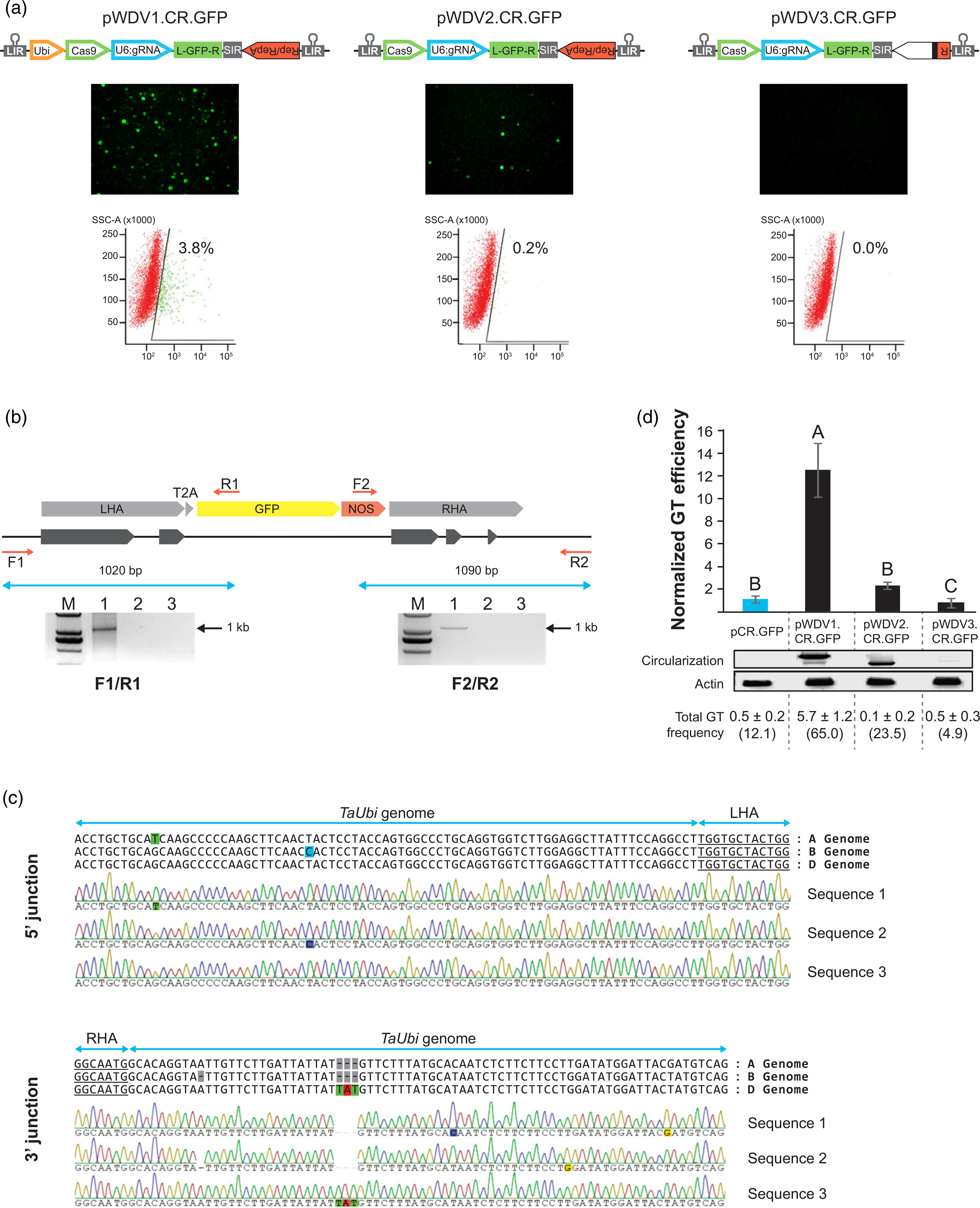Figure 4.

High-efficiency gene targeting (GT) mediated by wheat dwarf virus (WDV)-derived replicons expressing CRISPR/Cas9 reagents in wheat cells. (a) GT-mediated expression of GFP in wheat protoplasts 2 days after transfection with the WDV vectors carrying the CRISPR/Cas9 reagents and the T2A:gfp donor template. Quantification of the number of GFP-positive cells was carried out by flow cytometry. (b) Schematic of the expected integration of the T2A:gfp sequence in the genomic ubiquitin locus and molecular characterization by PCR using specific primers. Lane numbers in the gel denote the following constructs: 1, pWDV1.CR.GFP; 2, pWDV2.CR.GFP; 3, pWDV3.CR.GFP; (c), DNA sequences for the 5' and 3' junctions of the integrated T2A:gfp fragment obtained with the pWDV1.CR.GFP vector. (d) Enhancement of GT efficiency in wheat scutella mediated by the WDV-derived replicons. Black bars denote the normalized GT efficiency compared with the non-viral control (pCR.GFP, blue bar). Error bars represent the standard error (SE) of five different transformation experiments (n = 132 scutella for each treatment). Analysis of variance (ANOVA) was performed. Different letters in the bar graph indicate significant differences (P < 0.05), as determined by the ‘least significant difference’ (LSD) post-hoc all-pairwise comparison test. Replicon circularization and endogenous actin gene control were detected by PCR. Total GT frequency (% ±SE) represents the percentage of cells with GT events relative to the total number of transformed cells (as calculated with the pWDV1-GFP control in each individual experiment). The average percentage of scutella showing at least one GT event is shown in parenthesis.
